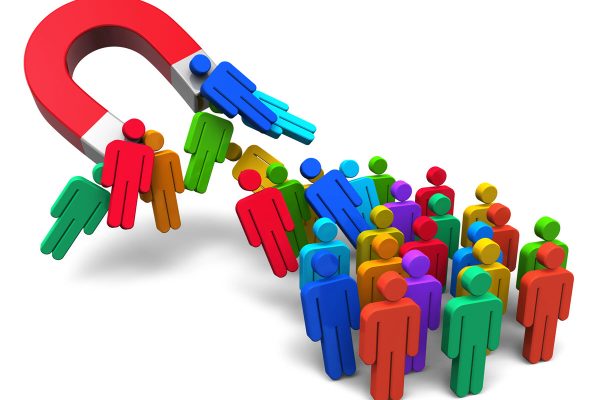E-Commerce: What Is It, Types, Examples, Use in Business

Estimated reading time: 6 minutes
Table of contents
It’s been almost more than 25 years since the first online transaction happened. Since then e-commerce has played an important role in the business line. It has become such a common thing in today’s scenario, that many people don’t even realize that when they become a part of e-commerce transactions.
E-commerce is growing at an amazing pace because of this it’s not at all easy to define it. To know more about e-commerce, we need to understand the guide to setting up online payments and businesses. So, in this article let’s study in-depth what e-commerce is, its types, benefits, and examples.
What is E-commerce?
So to have a better understanding, let’s first figure out what e-commerce is. According to Shopify which is an e-commerce software company, e-commerce is simply buying and selling of products and services online through a medium of a website.
One can easily set up their store online and sell products online on a large scale. All the buyer needs to do is select the product, pay for it online and then keep a check on the product information.
E-commerce cannot be considered only if your business is set up online, it will only be considered online if both parties are doing the transactions. In easy words, E-commerce is simply a retail sale to shop dripping. To have a better understanding of it, let’s look into different types of e-commerce.
What Are the Types of E-commerce?
Business to Business (B2B)
One of the most common e-commerce is known as Business to Business. This actually works out when two business parties have a transaction of goods and services between each other.
One great example that falls under this category will be a mining company involved in a transaction with some heavy machinery company that can be considered under the B2B transaction category.
Business to Consumer (B2C)
Again one of the most common forms of e-commerce. It occurs when a business sells its product or services to consumers.
In this kind of relationship, users always try to buy goods or services at low prices. For example, the goods purchased on Amazon can be considered under this category.
Customer to Customer (C2C)
Many businesses don’t have a large impact on this type of transaction, but still, they play an important role. Because they rely on third parties to behave like an intermediary.
A good example of C2C is eBay. Because they aren’t selling or purchasing any type of goods, they provide all kinds of services for other users.
So in this kind of relationship, the intermediary doesn’t need any kind of shipping because the service is directly provided by the seller.
Customer to Business (C2B)
This is not so commonly used e-commerce, but it’s quite similar to C2C because in this kind of transaction intermediary is required.
In C2B transactions, generally business acts as a buyer and the consumer acts as a seller. One such great example of this transaction is stock photos.
Basically, the intermediary site hosts the transaction once the consumer takes the photo and uploads it on a stock site.
Business to Administration (B2A)
Business to Administration e-commerce is also known as B2G in other words. That’s because the business provides services and products for the government generally with the help of a website.
Another way to understand this transaction is through taxes, it’s a perfect example that falls under this category. Taxes generally go to the government and can be filed through any third-party business.
Consumer to Administration (C2A)
This e-commerce is almost similar to B2A. That’s because it also takes place when a consumer provides something to the government.
This kind of transaction is very simple. One basic example of this can be buying tickets.
The only thing that needs to be considered is that the transaction must be online.
Currently, B2A and C2A are not so common e-commerce right now, but surely they are going to play a major role in our future.
After having a good understanding of e-commerce, its types, and examples, let’s see how one can use this e-commerce in business.
How E-commerce Is Used in Business?
Each day online businesses and online shopping are evolving. Technology has affected how people shop online. The most basic impact of e-commerce on business is surely the ease of continuity. Must be wondering how right?
Let me explain this to you! With the condition of a global pandemic from the past couple of years, e-commerce has helped businesses of all sizes to go ahead, sell their services online and grow.
We should be thankful to this convenience offered, otherwise, the business should have remained as usual, in spite of nationwide lockdowns almost all over the world.
Since then the scope of e-commerce has grown rapidly, and still reaching great heights. There are massive opportunities for the entrepreneurs out there in this sector.
Because doing business online has several advantages. It is less expensive, it is less time taking, it has a wider reach, and much more.
Let’s have a look at them in detail and see how e-commerce has impacted the business.
Less Costing
When you have your own physical store, your day-to-day expenses are huge. But with an online store, you only have to spend on your website, to keep it running and hosting. Once your website is ready, you can upgrade your business slowly as it grows.
Better Reach
With an online business, your customer can be anywhere in the world. You’re not just limited to a small place, but instead, you can sell your product and services at any corner of the world.
Better Flexibility
Opening a physical store is tough and time-consuming, but having an online business is easy to open, and be operated in just a few days. You can simply work from home, all you need is a little storage space for your products.
Actionable Analytics
It is one of the biggest impacts of e-commerce. The collection of data for business is one of the toughest tasks. But since e-commerce can turn into a run, one can easily find any information about the customer, their likes, preferences, and much more.
So all the impacts of e-commerce have already changed a lot in the business line, and surely they are here for the long term.
It is fast, flexible with immense potential, all you need to do is work from scratch and wait for it to grow in volume.
So what are you thinking of? Go and start your business too!








